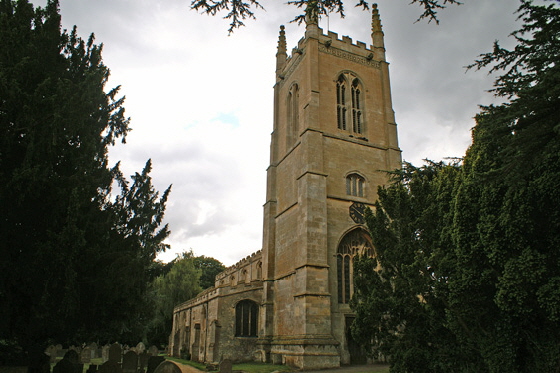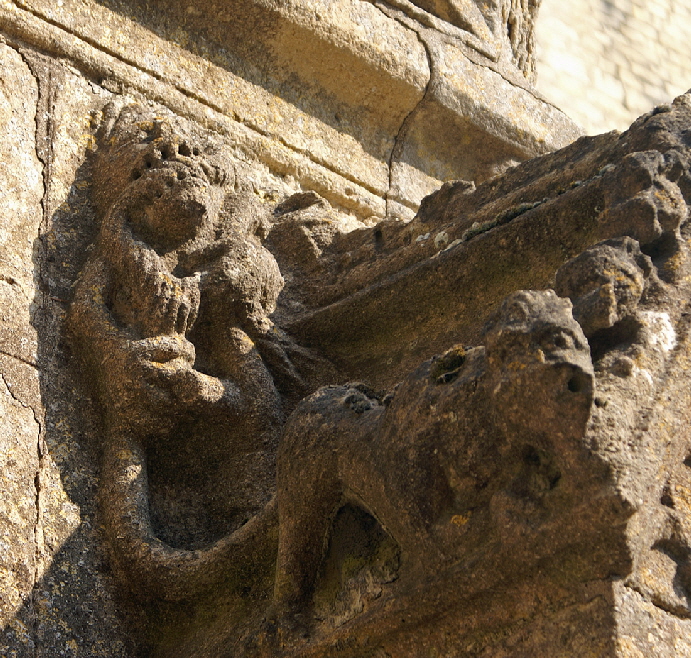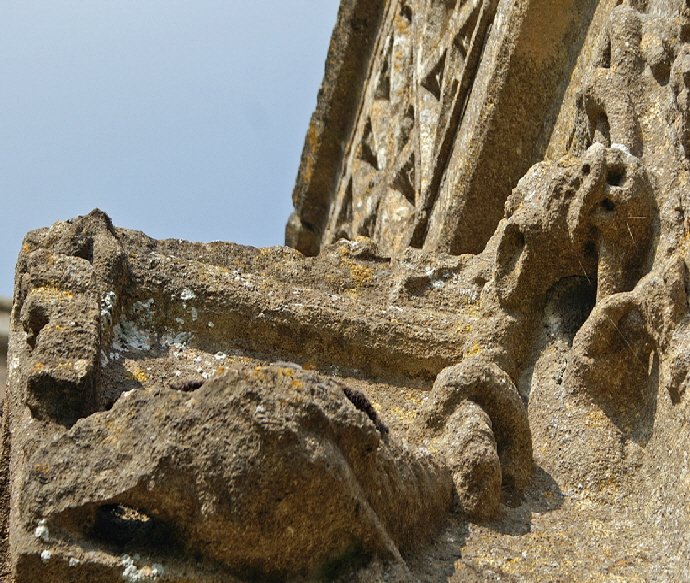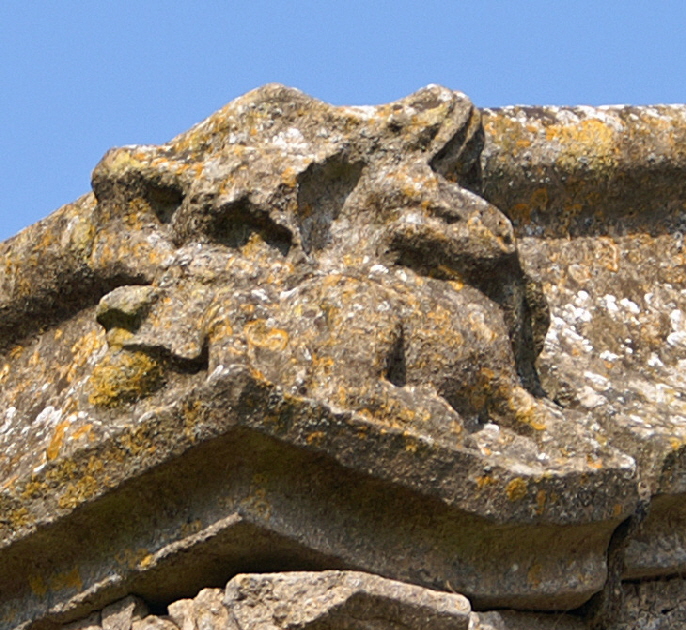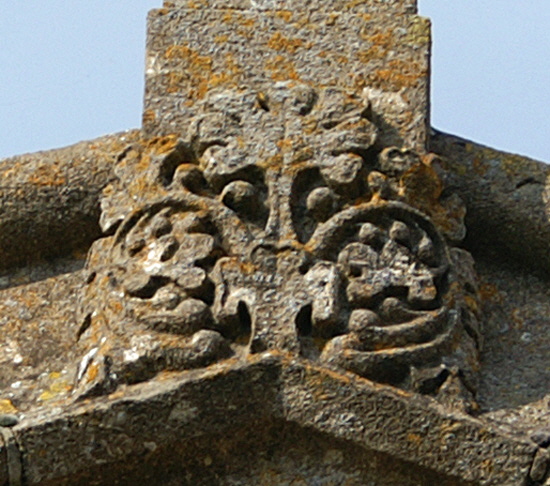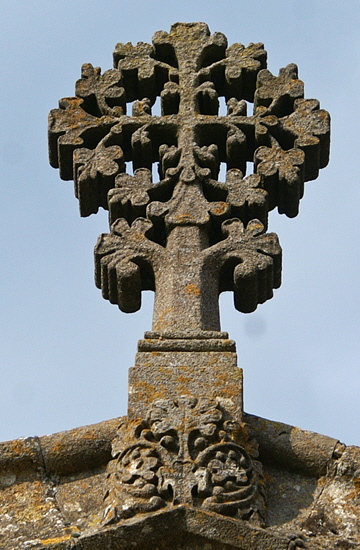|
|
||||||||||||||||||||||||||||||||||||||||||||||||||||||||||
|
Please sign my Guestbook and leave feedback |
||||||||||||||||||||||||||||||||||||||||||||||||||||||||||
|
Recent Additions |
||||||||||||||||||||||||||||||||||||||||||||||||||||||||||
|
|
||||||||||||||||||||||
|
It seems reasonable to assume that such illustrious patronage accounts for the grand proportions of the church. Most interesting to me is that of Robert Bertie, first Earl of Lindsey who was killed at the Battle of Edgehill in 1642, and his son Lord Willoughby. Lindsey was General-in-Chief of the Royalist army, no less, at Edgehill, the first major - and indecisive - encounter of the Civil War. It may have been more decisive had not the renowned Prince Rupert been given independent control of the cavalry. Not for the last time Rupert’s arrogant impetuosity proved costly. Lindsey was shot in the thigh and his son surrendered to the Parliamentary army in an effort to save his father. Despite offers of assistance from the Earl of Essex commanding their forces, Lindsey died. Charles I tried to include Willoughby in a prisoner swap but he was not released for a year. The monument is resplendent with military icons. There is an angel roof to the nave that dates from c16 but it appears to be heavily restored and is a little ordinary compared with others in the region. What is fascinating is that high on the “T”s of the roof beams are effigies of dragons! From ground level they appear as indistinguishable grey marks that could be metal fitments of some sort. Only a telephoto lens and “photoshop” reveals magnificently malevolent-looking green dragons with red eyes and tongues! Not to mention a heroic patina of cobwebs are some distinctly evil-looking insect nests |
 |
|||
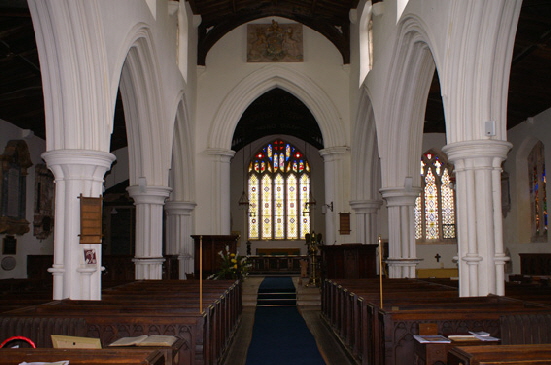 |
|||
|
Left: General view from nave to chancel. Right: A mass of monuments “adorning” the south wall of the chancel. The north is similarly furnished. |
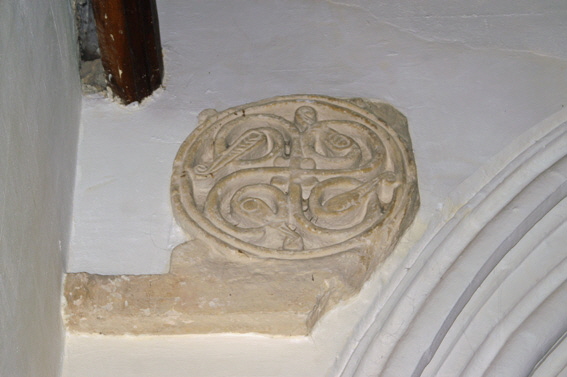 |
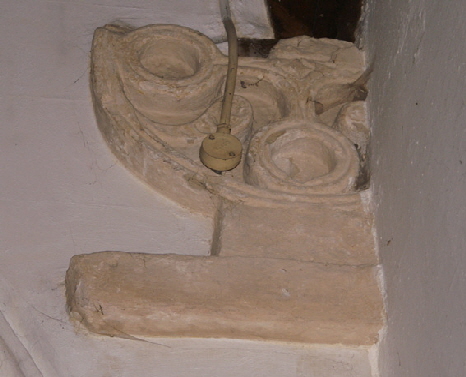 |
||||||||
|
The two remaining Anglos-Saxon roundels at either end of the south wall of the nave. One might understand the disregard the aisle-builders may have had for these somewhat abstract devices a few hundred years ago. I think we might judge more harshly those who allowed one of them to be defaced by an electrical junction box. Not all vandals wear hoodies and carry spray paint. |
|||||||||
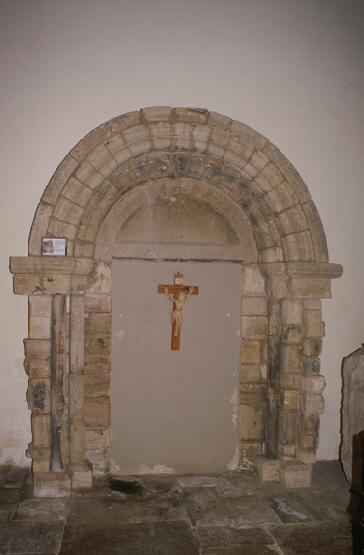 |
|||||||||
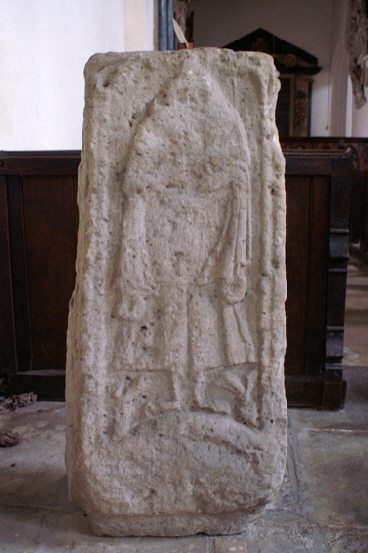 |
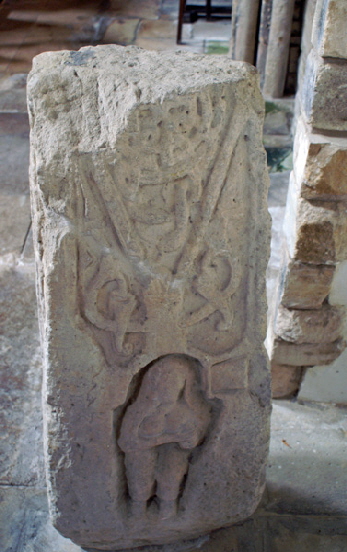 |
||||||||
|
Left: The c12 century doorway brought here from Scottlethorpe. Centre: The c8 Anglo Saxon cross shaft with a headless figure, possibly of St John. This is no great work of art: the arms are inordinately long and the legs stick-like! Right: The interesting reverse side of the cross shaft with what some believe to be a seated female figure.beneath an abstract design. |
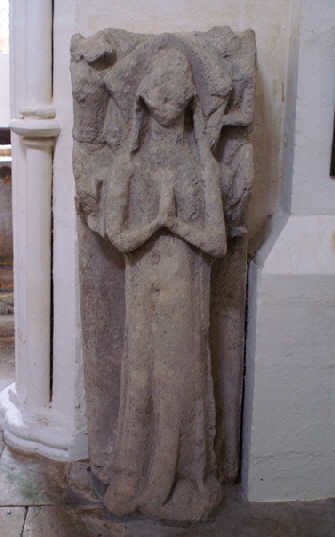 |
|||||||||||||||||||
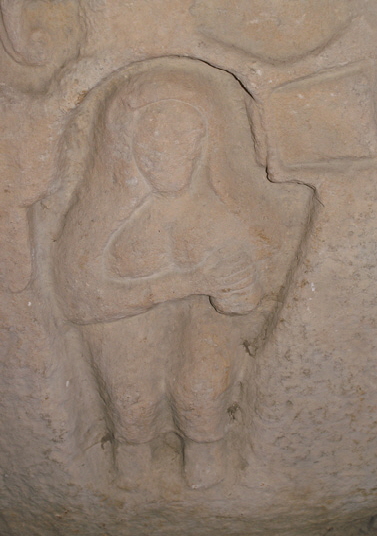 |
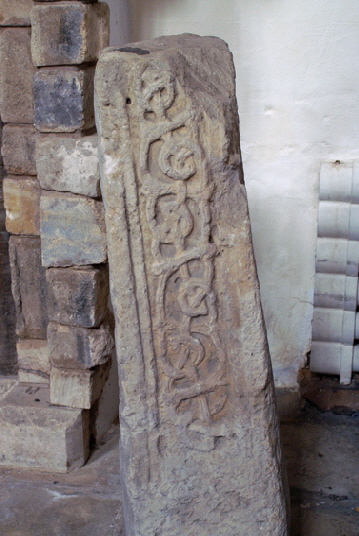 |
||||||||||||||||||
|
Left: The seated (?) lady. What is she holding in her left hand - a baby? Lorna Lincoln theorises that the shaft would have been a Holy Family group but we don’t know. Every way, this is a strange image. Her arm seems to come from somewhere around her head - or form under a cloak.. The fingers are extremely crude. Compare this with the marvellous art at Deerhurst in Gloucestershire. Centre: Celtic imagery on the two sides of the cross-shaft. Right: This c13 sculpture also appears in the nave. It is weathered so it clearly was outside the church at some point. |
|||||||||||||||||||
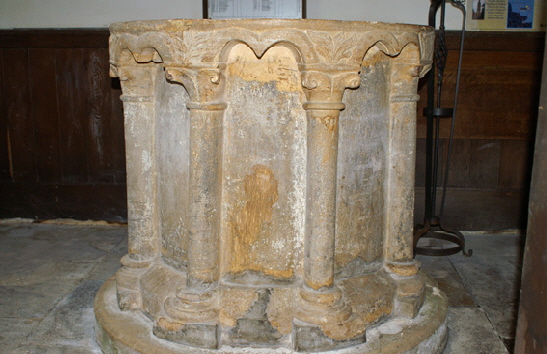 |
|||||||||||||||||||
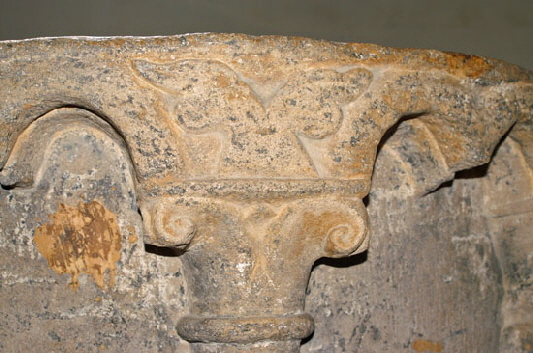 |
|||||||||||||||||||
|
The c12 font with its arcading. Each of the pillars on the font are topped by capitals with leaf motifs. |
|||||||||||||||||||
|
The “Dragons’ Den” |
|||||||||||||||||||
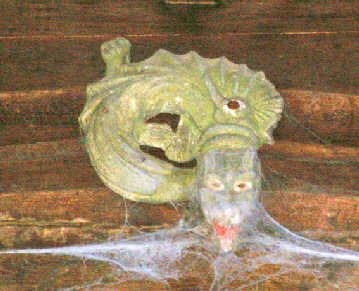 |
|||||||||||||||||||
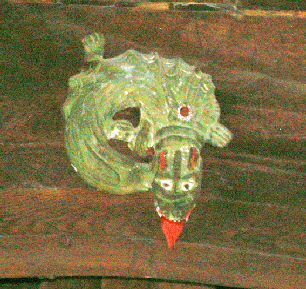 |
|||||||||||||||||||
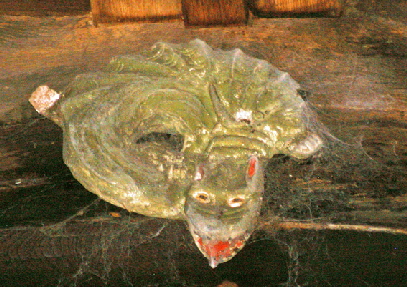 |
|||||||||||||||||||
|
The dragons appear on the middle of each nave cross beam, facing the chancel. From ground level it is hard to discern what they are and it was only by using a 300mm lens that I managed to get these pictures, and even then I needed Photoshop enhancement to correct the light and show the colours. It seems most likely that these date from the time of the Angel roof itself which is c16. It is difficult to believe that such pagan images would have been any later. The angels themselves look to have been painted relatively recently so perhaps these beasts were repainted at the same time? Either way, they are pretty fierce and it is quite rare to see dragon figures that emulate our c20 representations. These look straight out of Tolkien rather than being Norman/Celtic. It is not even clear that they are made of wood, although it seems reasonable to assume that they are. As can be seen from these three examples (there are at least two more) they are not identical although they are very similar. I wonder what is the significance of the red spots on the dragons’ backs? Perhaps this is where they nailed to the beams. None of the books mention these beasts. Does anyone have definitive information? |
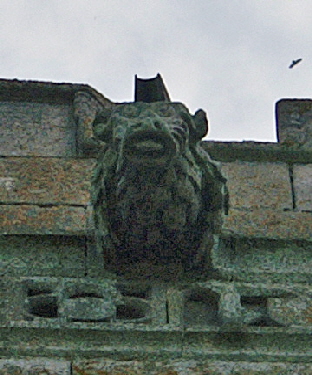 |
|||||
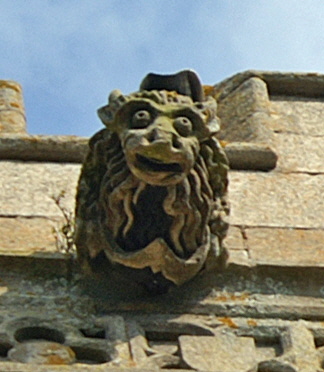 |
|||||
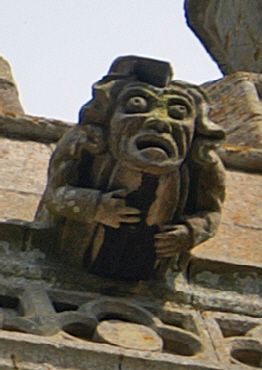 |
|||||
|
Edenham is not a church that is adorned with a multitude of carvings, but those that are there are very fine. These gargoyles adorn the c15 tower. |
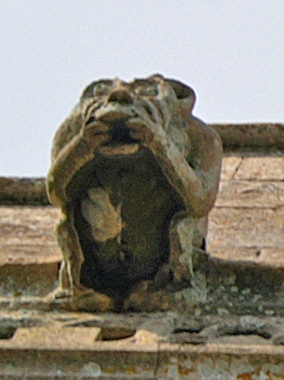 |
|||
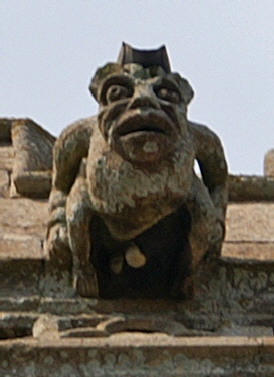 |
|||
|
|
||||||||||||||||||||||||||||||||
|
|
|
|
||||||||||||
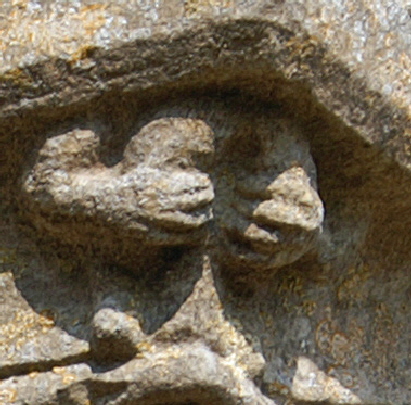 |
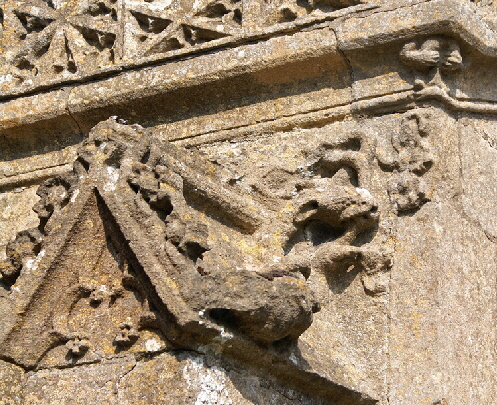 |
|
Finally, this is Edenham’s naughty little secret. It is at the corner of the parapets on the south porch and is almost impossible to discern without telephoto lens or binoculars. Look carefully at the top right of the right hand picture. In my article and book on Demon Carvers & Mooning Men I reveal the use of the “mooning man” as a trademark of a stonemasons guild in this area, probably based at Oakham. This rude figure may be a more sophisticated example of a mooner, or it may be a rare sheelagh-na-gig - a female fertility symbol that leaves nothing to the imagination! I believe it is much more likely to be a mooner. In the rest of the area there has been little or no attempt at concealment. This one, however, is very subtle indeed. This has been a church with wealthy patrons who undoubtedly paid for the adornments to this church. I have a shrewd idea that the masons felt that an “in your face” mooning man such as those at so many churches in the area would not have been acceptable to those aristocrats so they hid it and designed it such that from ground level it would look like a decorative device. They didn’t have to worry about people having telescopic devices in those days and there were no spectacles! I believe this shows the length they would go to in order to incorporate their naughty little trademark. Was this by the Mooning Men Guild? I can’t prove that it was but geography and date says that it is a possibility. Why else would the stonemasons go to such trouble? |
|
|
